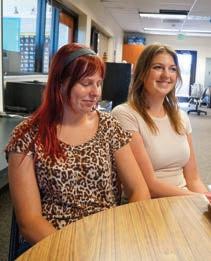
It was definitely a totally different experience [playing on the new field] because … it felt like [we] were being respected.”
Riley Cullivan SOPHOMORE


It was definitely a totally different experience [playing on the new field] because … it felt like [we] were being respected.”
Riley Cullivan SOPHOMORE
 PHOTO BY ANNA OPALSKY/FALCONER
PHOTO BY ANNA OPALSKY/FALCONER
March 12 marked more than just a 3-0 win for the TPHS varsity softball team. It was also the first game on their new field, a development 28 years in the making, according to varsity Head Coach Jonathan Moore.
This month, the varsity softball field opened after nearly seven months of construction and multiple delays due to drainage issues. A project stemming from a Title IX complaint filed in 2021 and then included in the first construction phase of the TPHS Athletic Improvements Project, the field provides the team with “a home, after 28 years,” according to Moore.
Prior to March 12, the varsity softball team played on a multi-use field that lacked multiple facilities, including a permanent fence. This left team members running after foul balls during play, according to several TPHS softball players.
“[The old field] was wide open and
people used it all the time,” Moore said. “It took a beating because anyone could get on it whenever they wanted.”
The new field, with a natural grass outfield and dirt infield, now has a new backstop that meets CIF standards, a permanent outfield fence and a new scoreboard and flag pole, according to SDUHSD Executive Director of Planning Services John Addleman.
“[The fencing] has been a godsend because it’s really increased safety for the girls,” varsity softball Parent Liaison Kim Klekotka said. “Every time [the ball] hits the net, I’m excited.”
Klekotka, the parent of a senior on the varsity team, filed the 2021 Title IX complaint that launched the field construction, pointing out inequities between the softball and baseball programs at TPHS. While she said the new facility is “a beautiful field,” it is “still in need of a lot of improvement,” namely a drainage system.
“On this construction project, I feel that maybe some of the engineering for
the field might have been overlooked when building it,” Klekotka said.
This summer, a new aluminum bleacher system and additional netting over the home dugout will be installed along with drainage improvements, according to Addleman.
“It’s nice to finally have a field that represents our level of play,” Kathryn McGinty (12), a varsity softball player of three years, said. “It’s hard to play your best when the field is bad.”
Riley Cullivan (10), a varsity player of two years, agreed.
“It was definitely a totally different experience [playing on the new field] because … it felt like [we] were being respected,” Cullivan said.
It is this respect that motivated Klekotka to file her Title IX complaint.
“I was mortified about the field conditions,” Klekotka recalled. “It was inequity at its greatest.”
While the varsity field was upgraded, the field used for practice by the JV softball team has yet to undergo similar
improvements — a request included in Klekotka’s complaint. The field used by the JV team is “old and beat up,” with no fence or bases, according to JV softball player Lolo Johnson (9).
In fact, softball has only one playable field — the varsity field — that both JV and varsity use for games. The program has had only one usable field for more than a decade, Klekotka said.
In addition to not being able to run simultaneous games, the softball program has difficulty hosting JV and varsity games on the same day since games cannot continue after dark due to the lack of lighting on the varsity field, a problem on the varsity baseball field as well. But, the baseball program has two playable fields, according to multiple reports by those involved in the softball program — a situation Klekotka calls “not equitable.”
TPHS baseball coaching staff did not respond for comment by deadline.
Similar inequity issues in softball continued on A2
FALCONS AT BAT: Riley Cullivan (10) steps up to bat against Oceanside at a home game on March 25 where the Falcons won 7-2. Nearly a month into practicing and playing on their new facility — a project sparked by a Title IX complaint filed in 2021 — the TPHS softball program now plays on a field with a permanent fence and a new backstop, scoreboard and flagpole.SOFTBALL continued from A1 programs exist district-wide.
While La Costa Canyon High School has two playable softball fields, one for JV and one for varsity, their facilities are similar to the old field at TPHS. According to Julie Neubauer, the head varsity softball coach at LCC and a social science teacher at TPHS, LCC’s softball facilities do not have permanent fences or a functioning bullpen, the last major update to the facilities being “long before [her] time.”
“You can’t even compare [the softball facilities to baseball facilities at LCC],” Neubauer said, noting that the LCC baseball program has an enclosed field, bullpen and permanent fence, as well
as a bigger scoreboard and permanent bleachers.
While a Title IX complaint such as the one at TPHS has not been pursued during Neubauer’s time with the team, she said she hopes an LCC parent will take up an effort similar to Klekotka’s.
“Unless there’s a parent push or a legal issue, [SDUHSD] doesn’t do anything,” Neubauer said.
LCC administrators and athletic staff did not respond to a request for comment.
At San Dieguito Academy, senior softball player Ruby Galbraith has invoked Title IX to advocate for improvements to the softball program, writing an article in the SDA student paper last fall on the subject.
“Our coaches have done a good job making sure we have the basic equipment that we need to practice and do drills,” Galbraith said. “So I wouldn’t say [the facilities] necessarily affect our technical skill level. It’s more of a mental effect of feeling like the school doesn’t care about us.”
According to SDA varsity coach Brian Zeglen, the SDA softball facility only got roofs for their dugouts two years ago and still lacks a bullpen. The district is designing an upgrade to the SDA field and plans to start construction in 2026, according to Addleman. Both Zeglen and Galbraith said if the plan does not move forward, they feel they will have the basis for a Title IX complaint.
SDUHSD Title IX Coordinator Laura
Strachan declined to comment on the facilities at both LCC and SDA.
At Canyon Crest Academy, the softball facility, the newest in the district after TPHS, is “pretty close” to the baseball facility, according to varsity coach Micah Rutkoff. CCA’s athletic administration is “very in tune with Title IX laws and making sure that there’s a balanced playing field for both boys and girls,” Rutkoff said.
According to Addleman, construction on a new synthetic field at TPHS that can be used by the softball program will begin this summer.
With a new field and more improvements on the way, the TPHS softball program has “more of a home,” Cullivan said.
The TPHS music department is set to introduce two new classes for the 20242025 school year: Musical Instrument Digital Interface (Recording Arts) and Instrumental Music.
The two classes — which “all the other high schools [currently] have and have had for years,” according to Amy Gelb, the music department director — will allow students with no prior musical experience to learn.
Both courses are open to students of all grades, but due to its last-minute inclusion in the course selection, only freshmen were able to select the classes. Students in other grades could submit a course change request to opt into the classes.
Instrumental Music focuses on allowing students to learn music at their own pace. At the beginning of each class, students will be able to decide which instrument they want to use for that day, according to Gelb.
“[Instrumental Music] is not a
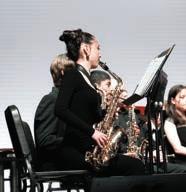
performance-oriented class like the other ones, but hopefully students will come in and learn and be motivated to ... join one of our ensembles,” Gelb said.
MIDI is designed to teach aspiring musicians how to produce music using “current industry music technology tools,” including software and interfaces like Digital Audio Workstations, according to the course profile.
Currently, Gelb teaches both classes at San Dieguito Academy. One of Gelb’s MIDI students at SDA, junior Kayla Osborn, said that she would “definitely recommend the class for beginners or even intermediate levels.”
“MIDI is definitely an essential class for students who are interested in music because it really goes beyond just teaching ‘how-tos’ and music theory,” Osborn said. “We recently had a project where we were required to use a minimum of eight instruments. This really pushed me outside of my comfort zone, but when I was finished I was really proud of what I’d composed.”
With the addition of the two courses,
Gelb is expected to leave her position at SDA and return to TPHS full-time. Reinstating Gelb’s position at TPHS was one of “the primary factors” in adding the new classes — in the hopes that with a teacher available to instruct them, they would promote more interest in a “robust music program here at Torrey Pines,” according to TPHS Principal Rob Coppo.
“Especially with the Instrumental Music class, the hope is that if a student is interested in music — maybe they played a little when they were young — now they have a place to land to get them into the music department,” Coppo said.
In an effort to add the two classes Gelb conferenced with Coppo, sharing similar insight.
“This is the first time in 20 years that I haven’t been full time [at TPHS],” Gelb said. “I haven’t been able to do as many extracurricular things with the students, so I went to him and asked how can we fix this to get my five classes at Torrey? That’s when we discussed

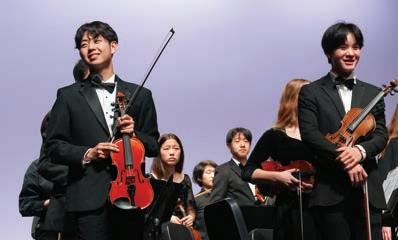
these two new classes.”
Although the official status of the classes will not be clear until the start of the fall semester, some students have already shown interest.
One such student is Taya Meluk (11), who is in the process of looking deeper into MIDI for her senior year.
“I think a lot of people ... want to try playing instruments of our choice, not necessarily in Orchestra, but in music production and recording arts,” Meluk said. “I think it’s going to be really cool and a good support to students who are interested or want to try something like that.”
Although she has not signed up for either of the classes next year, Raisa Tuerxun (11), a member of Jazz Band, also sees promise in the classes.
“Having new introductory classes will definitely help students be able to harness their skills with their instruments, which then means they’ll be able to branch out to other opportunities like those in Band, Jazz Band and Orchestra,” Tuerxun said.
The Spring Concert is an annual event put on by the TPHS music program. On March 12, Band, Orchestra and Jazz Band performed, just a week after the TPHS music program earned a Unanimous Superior Rating in the highest level of difficulty at the Southern California School Band and Orchestra Association Festival.

Jessie Isario is administrative assistant for Asst. Principal Robby Shockney, and she has worked at TPHS for just over a year, managing “day to day tasks” and substitute teachers. On March 13, Isario was elected Classified Staff Member of the Year by the entire TPHS staff. The Falconer sat down with Isario to talk about her personal work ethic and mottos.
I know that people always say, ‘If you’re early you’re on time, and if you’re on time, you’re late.’ I honestly follow that to a T ... I usually get to work about half an hour early, and as far as me, the way to my heart is with punctuality ... I like to be prepared for everything, and I like making sure that when it’s time to start I have everything ready. That’s basically my thing.
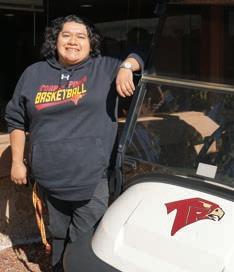
Four members of the TPHS Distributive Education Club of America are headed to the International Career Development Conference in Anaheim on April 27, joining more than 22,000 other high school students from around the globe for the three-day event.
DECA is a club dedicated to preparing emerging leaders and entrepreneurs in high school and college for business careers through a series of competitions. According to adviser and Business Management Pathway teacher Shannon Taylor, the TPHS club has around 70 members.
Each year, DECA participates in three levels of competition. Members can secure spots at the international conference during state competition.
During competitions, participants choose one of six categories: Business Management and Administration, Entrepreneurship, Finance, Hospitality and Tourism or Marketing and Personal Financial Literacy and take a multiple choice test of 100 questions in their chosen area.
Competitors are then given a roleplay scenario, which is used to guide a 10-minute presentation to judges.
Competitors may also opt to submit a 20-page report.
In March, DECA sent 32 members — the most in TPHS history — to the State Career Development Conference in Anaheim.
Shir Haim (9) and Gordon Zhang (10) qualified to advance to the DECA International Career Development Conference.
Haim placed 4th in Business Management and Administration, and Zhang placed 2nd in the same category during the state competition.
“[DECA] takes time and you’re really bad at first,” Haim said. “But I think it started being more fun and easy the more I did it.”
This is Haim’s first year and Zhang’s second year in DECA.
DECA President Chis Ge (12) and Nethra Mahendran (12) qualified independently of the state round and will also attend ICDC under the Emerging Leader Series.
It has been just five years since DECA Club was revived at TPHS, and Ge said that this year the club hit a record number of new students.
“My experience has made me realize that watching my members grow and be proud of their achievements brings
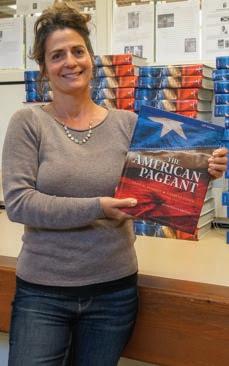
“For ballot measures and propositions, looking at who authored the proposition and who stands to benefit or lose from it can be really helpful. It’s a lot like looking at point of view and purpose and bias when we look at documents in my history classes.”
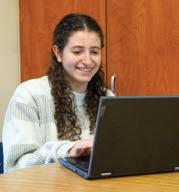
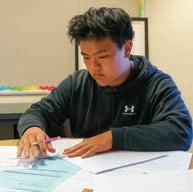
me more fulfillment than my own competition results,” Ge said.
Taylor has run DECA since its revival and said it has grown consistently since.
“It just took on a life of its own, and I stuck with it because the kids were so passionate about it,” Taylor said.
This year, due to the increase in membership, students split into small groups to study and mentor one another.
“I enjoyed dedicating my time after school to work with my small
group because I could nurture them individually and witness their progress over time,” Ge said.
Despite the fact that all current club officers are seniors graduating this year, the hopes are high for the future of TPHS DECA.
“All seven of our officers are currently seniors so we are electing an entirely new officer team this year,” Ge said. “Especially in our large population of first-year members, I see great potential in each and every one of them.”
“Before you go to the polls, be informed... sometimes
[candidates and propositions] try to trick you ... knowing different positions and functions and knowing which House members represent local districts ... is important to know.”
The TPHS robotics team, widely known as the Millennium Falcons, won the Hueneme Port Regional competition in the 2024 First Robotics Competition, bringing home two blue banners and qualifying for the World Championships.
This year, three out of four SDUHSD robotics teams advanced to the finals of the Hueneme Port Regional competition, indicating that the SDUHSD area is becoming a “powerhouse at robotics competitions,” according to Ethan Lemke (12), the head of design for the Millennium Falcons.
The event was the team’s first regional competition of the season. They faced “very qualified teams,’ including schools that were former world champions, according to Eric Grun (12), the team’s president. After the initial qualification matches, the Millennium Falcons and the Lincoln High School Steel Stingers were chosen by a team from the Netherlands to form an alliance.
“That led us into a very good, strong alliance … we complimented each other very well,” Grun said.
The alliance TPHS joined advanced to the elimination matches, where it remained undefeated and emerged as the regional winner.
“We’ve been in the workshop for so long, and our goal this year has been to win,” Head of Programming Edison
Seeing so many teams from our district shows the quality of the teaching we’re getting, and how it really translates to something meaningful.”
Eric Grun SENIOR
Shen (12) said. “Being able to do that after so much hard work is just really satisfying.”
Lemke agreed.
“All our hard work paid off,” Lemke said. “I’m really proud of all the work we did at the competition and in the room, all the countless hours we spent on the robot.”
At the competition, the Millennium Falcons overcame challenges, including poor lighting that obstructed the robot’s ability to aim autonomously and lastminute repairs before the final round.
“We always have to adapt to the situations,” Grun said.
At the Hueneme Port Regional, TPHS was not the only standout from SDUHSD. San Dieguito Academy’s Team Paradox and Canyon Crest Academy’s Aluminum Narwhals competed against the Millennium

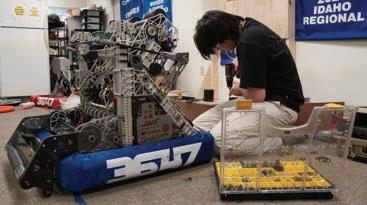 PHOTO BY ANNA OPALSKY/FALCONER
PHOTO BY ANNA OPALSKY/FALCONER
Falcon’s alliance in the finals, but top honors went to the TPHS alliance.
“We always want to help each other out,” Shen said. “It’s just a really great culture where even though there’s a lot of competition, you always want to make sure the other team is doing good as well.”
Many team members agreed that the district-wide success is a sign of a strong SDUHSD education program, particularly in STEM.
“Seeing so many teams from our district shows the quality of the teaching we’re getting and how it really translates to something meaningful,” Grun said.
The Millennium Falcons’ mentor Klint Kirkconnell won the Woodie


in 2010.
Grun described Kirkconnell as the “backbone of the team.”
“All of those little tips that [Kirkconnell] has and all the experience he is able to give to us is a really big part of why we won,” Lemke said.
For Kirkconnel, he mostly lets his students run the show, only giving direction as necessary.
“I try to keep the students as safe as possible and steer their ideas into areas that are logical, but it’s a student-run organization and they decide how to do it,” Kirkconnel said.
An art exhibition, featuring creations by TPHS students and teachers, was displayed at the TPHS 50th Anniversary Celebration at Farmer & The Seahorse on March 23. Attendees were invited to peruse and purchase the art during a silent auction.







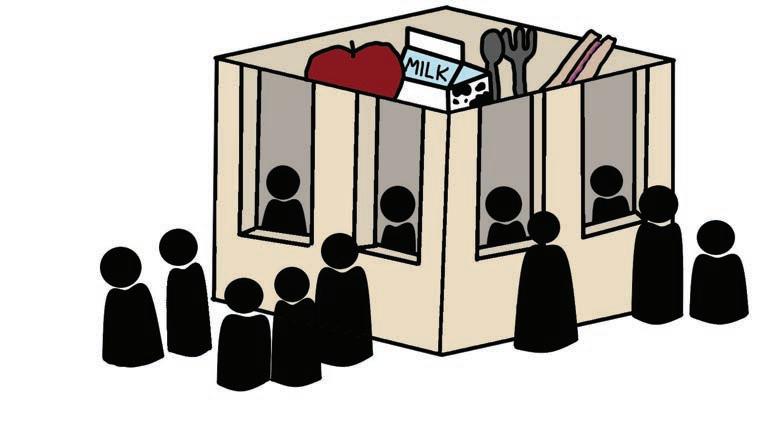


Think of any high school movie; most likely, it has a clichéd lunch scene in a cafeteria, where the tables and seating reflect the social hierarchy on campus. While these fictitious lunchtimes may reflect high school cliques with some accuracy, they got one thing wrong: all students on the big screen had equal access to cafeteria meals.
Only in the 2022-23 school year were free school lunches available to all students in California. Though free and reduced prices were previously available to low-income families, those programs often required applications and came with stigmas for students who used them.
In 2022 California instituted Universal Meals, a state-funded mandate that provides free lunch to all public school students regardless of income status. California has begun to move in the right direction, leveling the field.
Before California became the first state to institute the program, meal programs targeting food-insecure students helped those who did not have access to consistent good nutrition. The success of the program is reflected in students’ academic performance.
According to the School Nutrition Association, “students who eat school breakfast have been shown to achieve
17.5% higher scores on standardized math tests and attend 1.5% more classes.”
A 2019 National Geographic story said about 20% of total calorie intake goes toward brain function, making good nutrition crucial.
California made the right decision in expanding the program to all students, as these nutritional and educational benefits affect all. Amid current pushes to return to the California system that served only low-income students, it’s important to understand the benefits of a universal program.
The promise of a free meal on campus is a comfort to many, regardless of their family income — not having to worry about your classmates hearing your hunger pains makes a difference.
However, some argue that having free school lunches uses funding that could be used to benefit a higher-need group. Specifically, the Republican Study Committee is focused on eliminating free school lunches in the 2024 federal budget.
According to the Washington Post, “Republican governors in 15 states are already rejecting a federally funded program to give food assistance to hungry children during the summer.”
By doing this, a barrier is created between students and academic success as well as physical and emotional health.
Singling out one group would counteract much of the good these lunches could do and instead amplify the isolation in-need students feel.
By supplying school lunches to everyone, California ensures a more level playing field and cultivates school-wide access. And, you can live out your “High School Musical’’ lunch-scene fantasy, with a full plate of food in front of every student, and hopefully no singing and dancing.
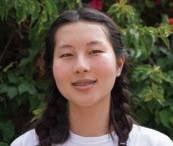
In the 2022-23 school year, California implemented a statewide Universal Meals Program, which required K-12 public schools to offer two free meals (breakfast and lunch) to all students each school day, regardless of family income.
While the program succeeded in serving 2 million more meals in its initial year compared to the 201819 school year, according to the California Department of Education, its implementation continues to be accompanied by undesired outcomes that necessitate a review of its utility.
By expanding the qualifier group for free meals from low-income students to all students, California dilutes the focus on food-insecure students and exacerbates food waste.
According to a 2019 World Wildlife Fund, 530,000 tons of food and 45 million gallons of milk are wasted per year in U.S. school cafeterias. With significantly more public school students now accessing school meals with the UMP, food waste only increases. At TPHS, untouched food sits piled in the trash after the lunch period; some students even throw away parts of their school lunches immediately after they receive them.
Food waste has always been a problem, but if free lunches are just being thrown away, it undermines the point of the program, throwing
resources beneficial to food-insecure students literally in the garbage.
Just because free lunch is provided does not mean everyone is easily able to access it. Because more students are participating in the program, it takes more time for each individual to get a meal. According to a 2023 EdWeek Research Center survey, 21% of teachers said their students had less than 20 minutes to eat their meals. At TPHS, the Falcon Eatery often has long lines winding from its doors during lunch, to the point where students run out of their class when the bell rings just to get their meals.
Many cafeterias face issues similar to those of the Falcon Eatery and are unable to meet the demand for free meals, even as those meals end up in the trash minutes later. According to the School Pulse Panel, a study on the impact of the pandemic on public schools, 53% of U.S. public schools in August 2022 felt they were understaffed entering the 2022-23 school year.
These problems — food waste and overburdened cafeterias — are not necessarily evidence that schools should go back to charging students for their meals, which is the current push by some California Republicans. Those politicians have adopted the cafeteria as a backdrop for their campaigns, pushing to end universal free meals in 2024.
While students should not have to worry about where they’ll get their next meals, the Universal Meals Program is currently inefficient and makes it difficult to deliver meals to students who truly need them. With suitable regulation and waste management, such as student inclusion in menu development and meal distribution through multiple distribution points specifically at TPHS, such a universal program could fulfill its original intention.
Hinano Kato STAFF WRITER Reese Carsley STAFF WRITERThe ability to freely scroll is the ability to freely speak
 Melina Toppi-DeLeo STAFF WRITER
Melina Toppi-DeLeo STAFF WRITER
In March 2024, the U.S. House of Representatives Committee on Energy and Commerce advanced a bill calling for TikTok to cut ties with its Chinese parent company, ByteDance, within six months, or face a full-scope ban in the U.S. In Congress, discussions surrounding the potential ban of TikTok have intensified as legislators grapple with the implications of allowing ByteDance to operate on American soil. Evidence of
action to ban TikTok can be seen in the proposals by congressmen — including those of Rep. Mike Gallagher (R-WI) — which include bills aimed at restricting the use of Chinese-owned apps in the U.S.
The idea of banning TikTok is a serious concern. As discussions rage on, the fate of TikTok hangs in the balance, and millions of users and creators are left in limbo.
While there are concerns about Americans’ data being in the hands of a foreign government, they are nothing more than speculation. It is more important to understand the impending threat of a blanket ban. Not only would outlawing the app violate the principles of the First Amendment of the U.S. Constitution, but it would also set a dangerous precedent for government overreach and censorship.
Freedom of speech and free expression without censorship are threatened if TikTok is banned.
For a democratic society that values
freedom of expression, individuals should have the right to share their thoughts and feelings without fear of government intervention. By banning the social media platform, the government would be infringing on the rights of millions of users who rely on it to connect with others and express themselves.
Furthermore, TikTok has become a powerful tool for marginalized communities to amplify their voices and share their stories; banning it would diminish their influence.
“In June 2020, TikTok became a hub for Black Lives Matter protests,” Abbie Richards, TikTok user @tofology and an educator on misinformation, said in a TikTok video. “From bomb shelters in Ukraine to protests in Iran, TikTok became a space for virtual activism driven by firsthand accounts from people affected by political issues.”
Such a ban on the application would limit Americans’ exposure
to the diversity of perspectives and experiences that are essential for a vibrant and inclusive public discourse.
Though concern is valid, the argument that TikTok poses a significant national security threat lacks concrete evidence.
According to cybersecurity experts at ABC News, there is little evidence that TikTok has shared U.S. user data with the Chinese government. While it is important to remain vigilant about potential risks associated with foreignowned apps, the blanket banning of TikTok solely on the grounds of national security is a disproportionate response.
It is essential to recognize that the right to free speech and expression is a cornerstone of democracy and must be upheld even in the face of complex challenges like data privacy and national security. Erasing TikTok would set a dangerous standard for government overreach and censorship, undermining the principles of individual liberties fundamental to a democratic society.
It’s called true crime — we must not forget the reality
 Gorba FEATURE EDITOR
Gorba FEATURE EDITOR
There has always been a morbid yet deeply human fascination with true crime among the general population. Many can’t help but wonder: what drives a human to commit such heinous acts? With the rise of social media, platforms spread stories, many of which become overly sensationalized and exploitative. Due to the sensitive subject matter, platforms should move away from such practices and instead work in a productive manner that provides proper respect and support to the victims, families and investigators involved.
Many of these reports are dramatized. Coverage — varying from podcasts to TV shows and documentaries to social media — turns true crime accounts into fantastical mysteries. This encourages viewers to weave information into their own conclusion, according to law professor Patricia Bryan, the author of an article on the subject published at the University of North Carolina at Chapel Hill. For the audience, the opportunity to try and solve the murder on their own feeds into the human need for a challenge, sparking engagement for the piece of media.
When true crime is presented in this exaggerated manner, it becomes a narrative. This is not harmful in and of itself — it becomes an issue when readers lose touch with the fact that the people they are speculating about are real human beings, not fictional characters. As people are encouraged to figure out the murderer themselves in these true crime
stories, oftentimes the public comes to a particular consensus on who they suspect. Unlike the justice system, the general public is not obligated to view individuals as innocent until proven guilty, allowing virtual dogpiling on the matter. Rather than helping obtain justice, this practice only hinders the investigation and harms the livelihood of potentially innocent people by turning them into social pariahs.
Additionally, when covering such a sensitive issue, how the coverage affects victims and their families must be prioritized over the entertainment value of a piece.
It is first important to consider whether the family would appreciate additional coverage on the issue in the first place. While many are strong advocates for increased action on cases and do desire coverage, there are also families who do not wish to pique the public’s interest and would only be retraumatized by the constant exposure caused by media attention.
One example where media coverage favored profit over the well being of the victims’ family is the 2022 Netflix series “Dahmer — Monster: The Jeffrey Dahmer Story.” The show’s creator moved on with production despite not getting responses to interview requests from any of the victim’s friends or family members, according to an article in The Guardian.
After the show’s release, many of those relatives of the victims have spoken out against it. Among the relatives are Eric Perry, the cousin of victim Errol Lindsey, who wrote on X that the show retraumatized all those involved, and Rita Isbell, Lindsey’s sister, who said the show was “harsh and careless.”
In this case, not only did the show harm those directly impacted by the murders, but it had no productive value to the case. Dahmer had already been apprehended by authorities in 1991, decades before the release of the drama. If a piece of media does not serve to further the investigation or support the victims and their

families, it has no value to society and in most cases, only furthers the hurt caused by the crimes in the first place.
This is not to say coverage of true crime cases is inherently harmful. In actuality, it can be helpful to the people involved and to the investigation, if done with sensitivity and integrity. For instance, when a crime is broadcast, it is more likely to reach those who might have valuable information. In turn, they may send anonymous tips to the police or in other ways aid the investigation.
Additionally, by drawing out new information and providing the incentive of public pressure, media attention can be a helpful tool in reigniting cold cases, giving forgotten victims a chance at justice.
Lastly, the media’s support for the affected family and community can lead to increased funding and
ART BY CLAIRE HWAoverall support for the investigation and potential prosecution.
Media platforms can encourage this type of positive change by focusing on being voices for the families, survivors and investigators. By spreading factual data released by authorities and encouraging their audiences to call in tips if they have valuable information, the investigation can be aided. Additionally, these platforms can provide links to where audiences can contribute to fundraisers that help fund both current and cold cases, whether on an individual basis or a more general one.
While sensationalist coverage of true crime can be a hindrance to the case and harm the people involved, when done right, coverage that is sensitive and wanted by those close to the case has the potential to support impacted communities and for justice to be served.
Assistant Editor-in-Chief Adriana Hazlett reflects on her early years as a hoarder and shares her love for collecting memories in tangible form.
At eight years old I knew my future — in the house of my kind elderly neighbor Paul. Staring down his hallway at the racks of memorabilia, the floods of pictures, the stacks of paper — I saw these things for what they were: signs of a hoarder, signs of me.
Maybe I’m a hoarder in utero — my room still hasn’t been completely overrun by my possessions like Paul’s house has — yet. But the fact remains that I feel, and always have felt, a deep, sort of strange attachment to material objects.
In preschool, I liked to shuffle around the playground, looking for trash and nothingness that appealed to me. I collected dirty old confetti, colorful scraps of paper, pipe cleaners, feathers, buttons. My treasures. I would take them home and stress to my mom that she was never to throw them away.
Maybe out of gratitude to my mom for actually keeping garbage, I picked more specifically for her as a birthday
present one year. About a month or so before her birthday, I went frequently to the park by my house to look for special trash for my mom. I found a thick ribbon of golden glitter, a charm that had probably fallen off a bracelet, leftover chalk, a tiny toy horse figurine. I put them all in a discarded pack of cigarettes. My mom was still smoking then.
I probably wouldn’t give my mom trash as a birthday present now. But I also think that my younger, rawer self had a stronger sense of something — of the something in nothing. There was sweetness in forgotten toys, my mother in cigarette packs. The mundane — the trash — could be pregnant with meaning, secret meaning. You just had to feel it, to look for it, along the ground.
I have not really grown out of my trash. For the past couple years, I’ve kept a small notebook with little objects taped in. Next to them, I write the date and place they’re from.

I keep seashells from the Oregon coast, concert wristbands, coffee shop receipts, train tickets, Post-it notes and napkins. There’s actually even my Falconer acceptance letter from freshman year taped in. I look at these things, and simply, I really care about them. Because it’s not just paper, it’s everything I love about cities and the color purple and my crystalline desires. It’s not ash, it’s music, and the moon over water. It’s not calcium carbonate, it’s a reminder of my departed and loving uncle.
Distilled spirits, that’s what my trash is. I won’t have ever lost a particular feeling, a moment, a person, an attitude — they’re there, forever and ever, in tangible and textured objects. Vessels for the essence of an hour.
I guess, all in all, it’s not an especially original idea that objects hold significance. There’s the Betsy Ross flag, the Rosetta Stone. You hear of prehistoric and archaic and medieval
PHOTO BY ANNA OPALSKY/FALCONERpeople believing in the cryptic power of a sword or a jug. Families pass down jewelry and silverware. Museums take root everywhere.
Nevertheless, I think really treasuring objects is a dying sensibility. In our current world, when we have so much surrounding us already, so much to be bought, to be discarded — in this state, the importance of our items is stripped away. They become soulless things, and hoarders are clinging to ancient impulses, unable to shake off the sense of how important each object is supposed to be.
Now as I prepare to move to college, I can only take so much, and some of my possessions and the meaning I’ve attached to them will have to be left behind. But I can see my dorm room now, filling up with my hoards — new hoards and new meaning. So I know there’s my past in the glitter trash, and my now, and my future in an old hoarder’s hallway.
 Gonzales STAFF WRITER
Gonzales STAFF WRITER
In January, the Newark [N.J.] City Council granted 16- and 17-yearolds the right to vote in local school board elections. The council’s approval raised two important questions: should the minimum voting age in the U.S. be lowered, and in what contexts should teenagers be allowed to vote?
In 1971, the 26th Amendment to the U.S. Constitution was approved and the voting age was lowered from 21 to 18. Many argued that if Americans were old enough to be sent to war, they were old enough to have a voice in government.
Since the Vietnam War, the effort to expand voting rights has increased. One 2018 House Joint

Resolution proposed an amendment to the Constitution to extend voting rights to citizens 16 and older. While such an amendment has yet to pass, local authorities in a number of cities have taken steps to lower the voting age, including in Berkeley, Calif., which was the first city to lower the voting age to 16 for local elections.
These developments are warranted, given the vast majority of teenage students that are in support of a lowered voting age, according to data from The New York Times.
The biggest argument in favor of a lowered voting age is that students deserve a say in the issues that affect them. As in the the Newark council vote, school board elections may be the logical place to start.
School boards, especially in recent years, have set the climates of school districts, presiding over heated discussions

on book bannings, correct pronoun usage in classrooms, and the like. Students are directly impacted by these boards, arguably more so than local parents and taxpayers populations who currently elect school board trustees. Beyond providing the promise of fair representation — an American value born in the early days of our republic — allowing teenagers to vote in local school board elections also encourages civic participation. The decision gives young adults a tangible and concrete way of making their voices heard, thus enhancing the U.S. political system. But should this right be extended beyond just local school board elections?

too uneducated to choose a presidential candidate. The claim is that students would make uninformed decisions influenced by their peers, parents or social media, rather than choosing a candidate whose qualities are valuable to the country. Given that the teenage brain does not finish developing until the early-to-mid twenties, some point to teenage physiology to oppose expanding voting rights.
But it is unfair and short-sighted to limit voting to those 18 and above. Younger people are affected by elected representatives, even beyond school board members.
Many adults, and even some teens themselves, believe that young voters are
With Newark as a model, more cities across the nation should lower the voting age to 16 and Congress should follow suit with a constitutional amendment. Such expansions should in turn be strengthened with increased civic instruction in high school, as teenagers must have knowledge of elections and sufficient information to vote. Young people’s political engagement is surging and so is our country’s duty to amplify voices and strengthen our democratic system.
A heartbroken millionaire throws lavish parties in the 1920s. A prince seeks revenge after a ghostly visit. A gloomy traveling salesman turns into a disgusting insect. A frustrated fireman is stuck with the job of burning books. We all know these characters; they are the stars of our literary classics.
The genre of classic literature is a vast sea where every wave represents a different perspective, a unique voice crashing against the shores of our consciousness. Students navigate through existential questions, seeking relevance and craving narratives that mirror our modern world.
But as we navigate these literary seas, it becomes necessary to reassess our guiding compass. While there is certainly merit in reading the classics, incorporating contemporary literature into English class curricula allows for more accessibility, bringing in new, formerly overshadowed perspectives that older books cannot provide.
It is no secret that classic literature predominantly features the voices of heterosexual white men. Out of the 111 books that SDUHSD approved for English classes, only 27 of them are written by women and 18 are written by people of color, according to the official SDUHSD reading list.
The standard Western canon has imposed itself on the way high schools teach entire generations of students, but who is to say whether Bradbury or Fitzgerald have more literary merit than Bryan Stevenson or Chimamanda Ngozi Adichie?
Reading contemporary literature
exposes high school students to a wider range of perspectives. Moreover, with current reading lists, many students never see themselves represented in the pieces they study. Better representation can result in a higher level of engagement.
Yet, the call for diversity transcends mere representation. Diversity is not just a box to check; it is the cornerstone of empathy and understanding. By weaving a tapestry of experiences, literary education has the potential to foster societal introspection and growth.
Old literature, akin to carbon dating, offers glimpses into past political, social and cultural climates. However,
it is crucial not to idealize these works as universally applicable to our contemporary conditions. Instead, let us view them as artifacts, providing invaluable insights into past eras and lasting aspects of the human condition.
A good example of bridging the old and the new is having students read both George Orwell’s 1984 and Margaret Atwood’s The Handmaid’s Tale as dystopian literature — something that teachers of multiple AP English Lit classes at TPHS have done. Balancing these works, which were written nearly 36 years apart, offers the insights of past dystopian creations while illuminating contemporary struggles.
While it is undeniable that classic literature holds immense value, it is equally important to recognize that the world is constantly evolving, and literature should reflect this evolution to remain relevant and accessible to contemporary audiences. Adhering
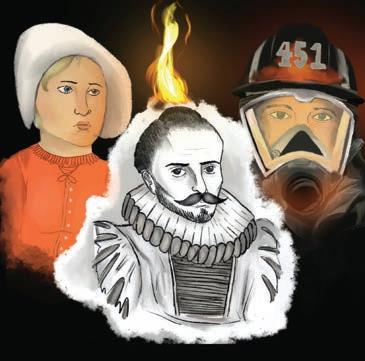
strictly to “classic” texts without room for adaptation or reinterpretation can inadvertently perpetuate outdated ideas and exclude marginalized voices.
Books like The Joy Luck Club , in turn, exemplify accessibility and relevance and can resonate with students far more profoundly than its archaic counterparts.
While SDUHSD may be better than other schools and California may uplift more voices compared to states like Texas, only 24% of our reading materials coming from female authors is a concerning statistic, one that many students may not realize as they plod through curricula oversaturated with white male voices.
The true essence of literature lies

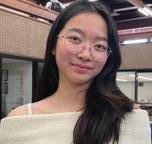 ART BY BRONWYN ROBERTS
ART BY BRONWYN ROBERTS
not only in mirroring ourselves but also in exploring connections and revelations that can be extracted from unfamiliar narratives.
We will never forget the great American dream of Jay Gatsby, the tragedy of Hamlet, the inexplicable metamorphosis of Gregor Samsa or the disillusioned conformism of Guy Montag. But let us be more openminded to newer characters like the determined An-Mei Hsu from The Joy Luck Club and the perceptive Offred from The Handmaid’s Tale After all, our classics were once new; it is our responsibility to ensure our literary landscape reflects the richness of our contemporary reality.
- The Falconer Staff
Sometimes, when you’re reading a book that’s been assigned to you, you’re not sure how it pertains to you, today’s culture, or your life.”
Jacob Lawrence Freshman
“I feel like the books have been read for so long. They’re really old, but they do teach about the history of how society was run in the past.
Pratch Maneerat Junior
Reese Carsley
Nadia Fadlu-Deen
Sarina Feng
Gabrielle Gonzales
Hinano Kato
Sneha Lele
Ari Rosenthal
Macy Swortwood
Melina Toppi-DeLeo
Hope Dennis
Mia Boardman Smith
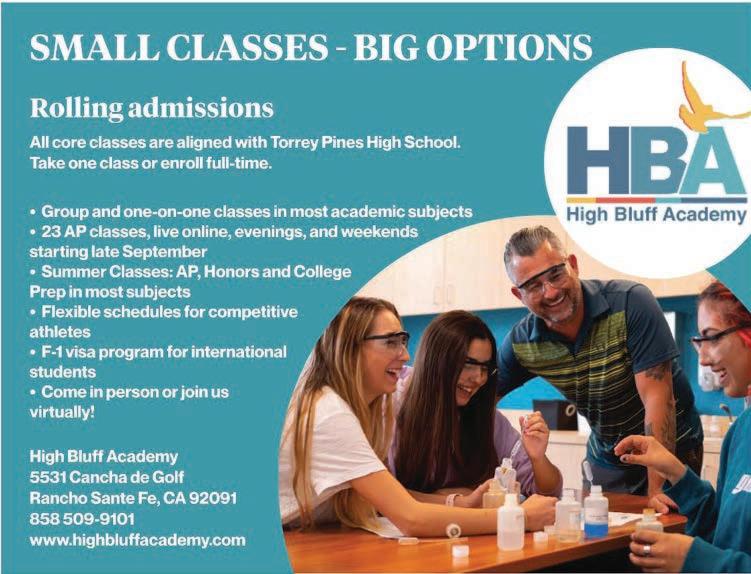
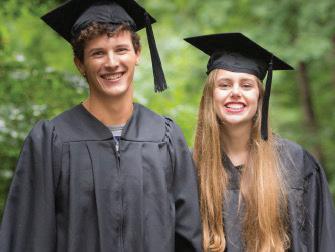



As a child, Phoenix Kim (12) didn’t watch the Super Bowl to watch the Super Bowl. He had no interest in football. He didn’t care about the game, the teams or the score. It was the commercials that caught his attention.
“I would only look for the ads,” Kim said.
“As I got older, I learned, ‘Oh, they’re not just random little videos. They actually serve a purpose for a larger business or company.’ That got me thinking about business.”
At TPHS, Kim took classes like Marketing and Advanced Business Management. He joined business-centered clubs like DECA.
But it was an opportunity to apply his interest to a real-world experience at a search engine optimization marketing agency called Grow and Convert that solidified his love for business and his plans to pursue it in the future — an opportunity in the form of an internship.
“I’ve always been interested in business and marketing. But doing this internship really added on to more reasons why I would be interested in this kind of stuff,” Kim said.
Kim isn’t alone. Across the TPHS campus, students are taking their passions for specific fields beyond the walls of a classroom to internships in the real world.
“In school, we mainly learn concepts that are more theoretical,” Carol Chen (11), an intern at Palomar Health who supports nurses and patients in the orthopedic acute unit, said. “In an internship, you really get to see how the topics you learn in school work out in real life.”
For many students, this experience helps establish their interests and paves a clearer path for their future careers.
“I wanted to get some experience with healthcare and see if it’s actually something I would be interested in because I know healthcare is a super big commitment,” Chen said.
But the opposite is also true: internships can help students identify what career

paths they do not want to traverse.
“Sometimes, [internships] are a reality check of, ‘Holy cow, this sucks. I am not going to spend four years studying this in college,’” James Anthony, teacher of the Internship class at TPHS, said.
Internship is a CTE elective offered to students pursuing internships off campus. According to Anthony, the opportunities are endless.
“I’ve got kids at real estate brokers and in labs and at these companies doing research that is kind of mind blowing. Stuff that I sure don’t know how to do,” Anthony said.
This breadth of possibility is one of the main benefits of pursuing an internship, according to Sara Zhao (11), an intern at a San Diego State University linguistics lab that develops tests for bilingual ChineseEnglish speakers with aphasia, a language disorder that impairs one’s ability to understand or express speech.
The first customer meeting we sat in on ... it was kind of like, ‘Oh, this is the real deal.’”
Ella Emberger SENIOR
“There are a fixed number of classes that are offered in high school, but your internship could really be about anything,” Zhao said.
This is the case for Eric Grun (12), who has a passion for computer programming. As a programming intern for a dermatopathogist’s lab, Grun develops machine learning models for the lab’s research in melanoma skin cancers.
“What I’ve been doing at the lab has taught me more in this niche area of machine learning,” Grun said. “It opened me up to the biomedical side of things and how to apply machine learning to places where it can really make an impact.”
provide valuable life experiences — things that only come through working in real-world environments, according to Anthony.
“We can do projects, we can do simulations, we can do contests. It’s great, but it’s not real,” Anthony said. “There’s nobody lighting you up if you come in late. There’s nobody telling you that the way you’re dressed at school ain’t going to cut it in my workplace.”
Ella Emberger (12), an intern at a State Farm Insurance firm in Solana Beach, said her internship has given her a better grasp on what a nineto-five job is like.
“The first customer meeting we sat in on … it was kind of like, ‘Oh, this is the real deal,’” Emberger said.
Just like actual jobs, internships provide unexpected opportunities for interns to step out of their comfort zones and grow as people.
For Sofia Kantor (12), who interns at the same firm as Emberger, this came in the form of planning an event for local business owners.
“At the event, my boss had me say a little speech in front of like 40 business owners in the community,” Kantor said. “I was pretty scared, but I think that was one of the greatest takeaways, just being able to share my passion with these really cool people.”
The Falconer looks at TPHS students who have internship positions.
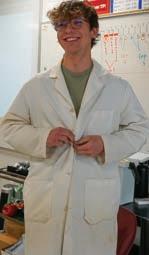

While internships help students gain skills in specific fields, they also
Oftentimes, these experiences can be daunting. But according to Nataly Medina (12), who interns at a small, home-based baking business called Dream Delicacies, overcoming this fear is crucial.
“I feel like it’s so scary, but you really have to put yourself out there,” Medina said. “Even if you don’t want to, you’re going to have to do it one day. Doing it now just helps a lot.”
by Rami Kabakibi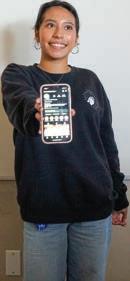
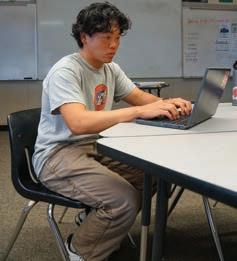
or Stanley McInnis (10), a highlight of his time in middle school was making the boys’ basketball team. For any other kid, this may have been just another achievement, but for McInnis, it was special — it was the first boys’ sports team he had joined since identifying as a male.
McInnis is one student at TPHS who falls under the transgender umbrella, a group that includes, but is not limited to those transitioning from male to female, from female to male and from male or female to nonbinary. Whether their peers are aware of them or not, these students sit in the same classes, get the same school lunch and walk through the same hallways.
McInnis’s journey toward exploring his gender began when he was 11 and 12-years-old.
“At the earliest stages, I experimented with non-binary as a label because I was still figuring out how I wanted to be perceived, and I wasn’t exactly sure [of myself],” McInnis said. “Then around 13 was when I was like, ‘Okay, I’m a boy.’ I feel like a guy and I want to be perceived as such, so I’m going to tell people to refer to me as such.”
For Sadie Brecheen (9), the nonbinary label stuck during this exploratory phase.
The choice is not to be trans; the choice is to transition.”Dan Smith* TRANSGENDER STUDENT
“I just noticed that every single time I felt uncomfortable with being called a girl, I was always thinking, ‘What if I feel like a boy?’ but [I thought], ‘I don’t feel like that at all,’” Brecheen said. “So [it was] back and forth until I landed on, ‘Maybe it’s between.’”
However, not everyone is fully open about being transgender; some prefer to be perceived as cisgender.
John Doe (name changed for privacy reasons) intentionally keeps their transgender identity private.
“I have spent a lot of my life trying to be as normal as possible … I can’t really tell anyone because I am going [to be] seen differently, and I just wish that people treated trans people the same as they would someone who was cisgendered,” Doe said.

A person’s willingness to be open about their identity stems in part from perceptions of
tolerance in their community. The perception of transgender acceptance at TPHS varies among individuals.
“I’ve observed a lot of people at this school, and in the majority, I’d say there’s not a good tolerance or acceptance rate of trans people,” said Will Clay (name changed for privacy reasons). “I might be biased because … I can’t see everybody and I don’t really know everyone’s true opinion, but from the words I hear in the hallways or at lunch … it’s like, ‘Yikes, I didn’t know you had that strong of an opinion.’”
Doe shared a different perspective, citing experiences in physical education classes when they were allowed to change in the nurse’s office, rather than a gendered gym bathroom.
“Honestly, people are surprisingly chill here,” Doe said. “I’ve definitely heard some questionable things from people,

but it’s not too bad.”
Regardless of how open one is in their exploration of gender identity, the transition phase can be a difficult process.
“For a long time, I was like, ‘There’s no way I’m trans because it’s so rare, and it’s not possible and it’s just not something that I ever imagined. And so I kind of wrote it off for a long time,’” Dan Smith (name changed for privacy reasons) said. “And then I realized, ‘Oh, no, that’s your path.’”
For Smith, “the choice is not to be trans; the choice is to transition.”
For many, supportive friends were key to making them feel safe during their transitions.
“I think it was finding people who accepted me, and to be honest, I had to change friend groups because … not everyone was a big fan of [my transition],” Nicole Brown (11) said.
For others, family was this support.
“I didn’t formally ever come out to my family. I just started going by Stanley at school and I told [my teachers] my pronouns,” McInnis said. “I think my parents just caught on eventually. I never had a sit-down conversation with them, but they’re supportive, so that wasn’t really a struggle.”
When there is no one around to look to for support, affirmation can even come from oneself.
“I’ll look in the mirror and be like, ‘You look good today, you’re transforming into something that you want to be,’” Cooper Trey (name changed for privacy reasons) said. “I’m being the vision that I’ve always wanted to be and it makes me happy.”
Transitioning is not a linear path for many; some days, you just don’t make the boys basketball team.
Many transgender individuals experience gender dysphoria – the distress that stems from one’s gender identity not matching their gender assigned at birth.
“It’s more about being jealous of not having anatomically different characteristics, or feeling self- conscious about
the fact that I wasn’t born the right way,” Brown said.
Charlie Miller (name changed for privacy reasons), an individual who identifies as genderqueer, felt this way from a young age.
“I was in eighth grade. I was at a shopping mall with some friends after a show. And I remember looking in a window [at] my reflection, [and] it just didn’t feel right,” Miller said. “I was wearing a high ponytail and a crop shirt, and I just felt gross.”
Smith shared this discomfort with mirrors, although in a different way.
“For some reason, it felt like when I looked in the mirror, I wasn’t there. It always kind of felt like I was watching my life from above,” Smith said. “And I [thought], ‘how do I connect with my body and how do I put myself back into my physical self?’”
But the experience of transitioning or of gender exploration is not one solely defined by dysphoria.
“Personally, I get gender euphoria when I just exist … and I am seen as a cisgender male and treated as one, it just makes me feel very giddy and happy inside,” Doe said.
Clay shared a similar feeling of joy.
“To me, trans joy is the togetherness of people who are so beaten down by others, but can come together as a community and just enjoy that they’re a little different but still the same compared to everyone else,” Clay said.
Wherever an individual stands under the transgender umbrella — whether they be exploring their gender identity, preparing to transition or walking onto the court for their first game on a team that affirms their true self — transgender students “still experience the world through a normal lens,“ according to McInnis.
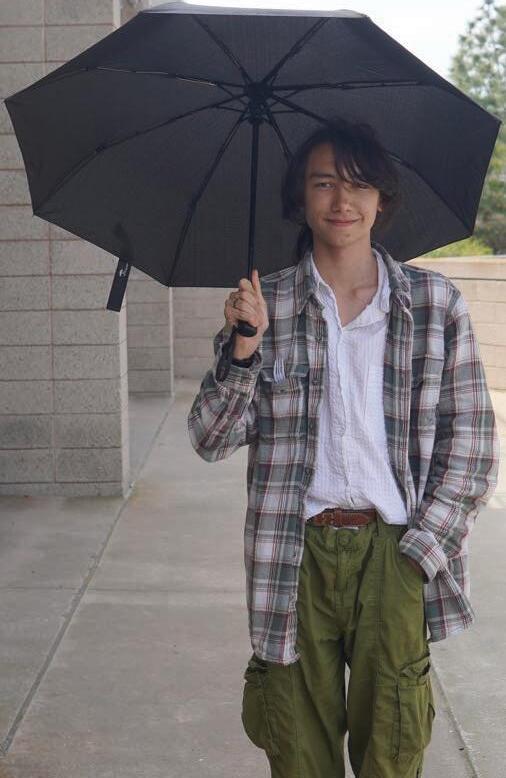
“I’m still a person with feelings. I didn’t just become weird the moment I realized that I wasn’t cisgender,” McInnis said. “It’s just one aspect of myself that isn’t like the norm.”
by Eric Lee5%
responded
7% responded
“yes I am transgender”
5%
“Nonbinary” for gender responded “I am not sure if I am transgender”
According to the TPHS 20222023 Healthy Kids Survey Report
Nine classrooms in the TPHS B Building. Three in the E Building 100s level. Two in the E Building 200s. Four in the G Building.
Scattered throughout campus, they are the places we go to study math. Together they form the TPHS math department.
The math department is what Integrated Math 2/3 Accelerated Honors teacher Kristina DeVico and IM 1 Honors and Calculus D-Linear teacher Abby Brown called one of the most “geographically split-up” departments at TPHS. Still, the TPHS math department finds little ways to collaborate.
Being that [Chen is] new, and she’s never taught high school before, she didn’t quite know where to start. So I have kind of taken her under my wing and passed on my stuff.”Kristina DeVico MATH TEACHER
“It [is] good to know that the people around you [have] a wealth of knowledge in their head,” DeVico said. “You look at what’s not working, and you can go to one of your co-workers and talk about it … [and say,] ‘Let’s figure this out.’ And between all the brains in the room, something can be hammered out that works to make the kids feel like they are getting a challenging education.”
In the B Building, Brown describes DeVico poking her head into different rooms, asking her co-workers how to solve one especially difficult problem –– sometimes even the math teachers need a little math help.
After many years of teaching Calculus D-Linear and Advanced Topics, Brown has now added IM1H to her class list.
“Even though the math is easier than calculus, I hadn’t solved things like that and done that kind of thinking in a long time,” Brown said. “So having the support of a teacher who has been doing that type of mathematics for a really long time has been really helpful.”
Erica Soderlund, who teaches IM1H and IM2H, especially emphasizes the benefits of having common prep periods with both Brown and DeVico, allowing them
to build curricula, exchange tips on best teaching practices and help each other out.
“I think given the chance, most [math department teachers] do want to collaborate and work for what’s best for students, which is a fun environment to be in,” Soderlund said.
Across campus in the G Building, geometric figures 3-D-printed in Brown’s classroom can be found on other math teachers’ shelves, ready for use in explaining some abstract topic.
“This year and last year when we’ve had topics that we needed to see models for, Ms. Brown had models of graphs and everything that both Ms. DeVico and Ms. Chowdhury have in their classrooms that they share,” Natalie Jalaie (11), a student in Chowdhury’s AP Calculus BC class, said. “[Which I think is] really cool.”
Upstairs in the E Building, IM3H teacher Robert Preske, along with IM3H and Intro to Calculus teacher Gino Campisano, have classrooms wedged between various English and Humanities classrooms. The two rely largely on “informal” means of communication, namely meetings between class periods while they wait in line outside the nearby staff restroom.
“It is informal because we are the only math teachers right there,” Campisano said. “At the [upstairs] staff bathroom, we’re there everyday between classes –– we’re just out there talking. Not usually about math, but often the math stuff [will] come up.”
Cut down to Room 405 of the G Building, where first-year IM1 and IM2 teacher Kendrick Kuo has set up camp:
“I was Mr. Preske’s teacher’s assistant 10 years ago, and this is my first year [teaching] at a high school,” Kuo said. “I’ve been having a blast.”
This kind of mentorship is common throughout the math department. One example can be found between the pages of DeVico’s lesson plan binders.
“I handed off all my IM2H classes to Robin Chen … so she has all of my binders,” DeVico said.
Binders with homework, keys, notes for IM2H.
“Being that she’s new, and she’s never taught high school before, she didn’t quite doesn’t know where to start,” DeVico said. “So I have kind of taken her under my wing.”
According to
The Falconer explores how the math department works together to create a challenging curriculum. How much do TPHS math teachers collaborate?
The limit does not exist.
DeVico, the two go through the binders together, DeVico explaining her “silly notes” and giving advice from her years of experience. DeVico says that it is these little guidances by which new teachers are “taught how to fly.”
“It’s not that [Chen] has to do everything my way but she has a skeleton to start from,” DeVico said.
That process of sharing materials is a continuous practice even among TPHS veteran math teachers.
“I wanted to tell Ms. Soderlund how things went with my third-period class today because she’s going to be teaching the same thing with her blocks tomorrow,” Brown said, laughing as Soderlund popped her head into Brown’s room mid-interview. “Something I decided to do worked really well, so I want to share that with her.”
This kind of collaboration seems to exist in the very nature of math. There is one answer, and the more effectively an answer is found, the better.
“I think at Torrey Pines, the whole math department is very compatible and friendly,” DeVico said. “There are other [subjects] with philosophical divisions on how to teach and what to teach. And I don’t think we necessarily have that as much here … because we all respect what each other does want to be there to help.”
by Caroline HuntMost [math department teachers] do want to collaborate and work for what’s best for the students, which is a fun environment to be in.”Erica Soderlund MATH TEACHER










Idon’t like new clothes. I don’t like the way they smell. I don’t like them,” Bailey Sayin (‘13) said.
In 2013, Sayin said she made the switch to vintage clothes. Since then, she has amassed a huge collection of vintage clothing that she sells on Depop and Etsy, reselling apps, under @baileyskylar and @dreamyvtg, respectively. She lists primarily ‘90s and 2000s vintage clothing; currently, she’s sold 6,057 items on Depop.
“My main thing is that I absolutely love vintage clothing,” Sayin said. “It’s my actual passion … It gives me so much dopamine to find items in the thrift store.”
Through thrift stores, flea markets and online marketplaces — to varying degrees, in varying styles — many are finding success with reselling clothes.
But there is a process, an art, to reselling. And it starts with actually thrifting the items to resell. They can come from many sources, including chain
thrift stores, antique and consignment stores, online platforms, even your own closet. For Sayin, she likes to find clothes at estate sales and through Craigslist.
In general, though, finding clothes to resell can be a tedious process when it is unsuccessful.
At the Goodwill outlet store in Escondido, widely known as the “bins,” it is “very inconsistent [and] very luck-based, but you could find 15 pieces if it’s a really good day,” according to Fayez Sweiss (11).
Sweiss has been selling clothes at Moonlight Marketplace in Encinitas and Kobey’s Swap Meet in San Diego on the weekends for over a year. He has been inspired by “the baggy clothes and brands” of skate culture as well as a “bunch of friends.” This sense of style is what most motivates him to resell.
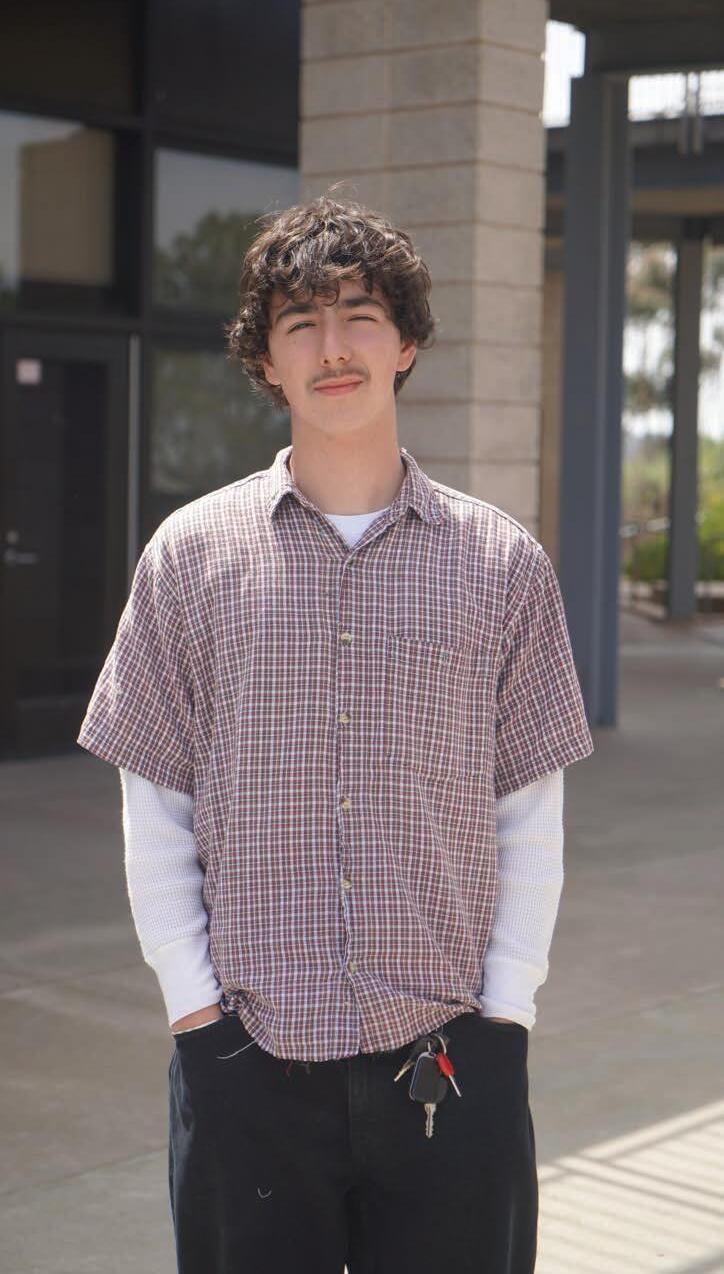
“I just like to help other people get a sense of fashion,” Sweiss said. “If someone were to ask me if they could go lower on price, of course I’m going to say yes, because I want to help out other people that want to dress better for themselves.”
At flea markets, booths with a vast array of items are spread out. Joining one differs from market to market, but if it is open to anyone and there is space, there will typically be a sign up process online or in person, as well as a fee to pay.
“[The flea market community] is really friendly,” Sweiss said. “I would say it’s a lot of fun because you’re just blasting music and hanging out with friends for a couple hours.”
Similarly, the environment — specifically the chance to “meet new people” and “see other people’s style” — is one of Meira Ganhewa’s (11) favorite parts of selling at markets like Kobey’s and Silverlake Flea. What brought Ganhewa to reselling was, again, simply a strong appreciation of clothing.

“I just love clothes. Fashion’s been one of my passions since day one,” Ganhewa said. “I started reselling clothes in seventh grade on Depop.
… Then just
recently I started going to markets, and I found a lot of success with that because Depop was kind of a slower process.”
I think it’s cool to try and find something that may not serve me but might serve another person.”
Meira Ganhewa JUNIOR
Beyond flea markets, online platforms like Depop and Poshmark are popular ways to resell clothes. While there are some drawbacks to selling online rather than in person, such as customers taking longer to buy an item and dealing with messages and shipping, there are many who prefer it as a method.
Sayin is one such person. It is “easier and quicker to sell online,” according to Sayin. For sellers, the key to marketing online is consistency.
“You need to be posting new items every day,” Sayin said. “It sort of catches you in a loop where you need to keep sourcing and buying items in order to sell items. If you want to sell eight items a day you need to be posting eight items a day.”
Generally, reselling clothes is “time consuming,” according to Ganhewa. It takes a while to find pieces you like, and it requires a different mindset than shopping for new clothes.
“If you’re somebody who’s used to just going into regular stores, it’s gonna probably be a little bit harder for you to find stuff [when thrifting] because you might get impatient and be like, ‘This is all ugly.’ You kind of have to think outside the box and use your imagination,” Ganhewa said.
This patience and commitment pays off though, as profits, for one, were “incredible,” according to Sayin.
“I would say I probably have spent around maybe $2,000, and profits from that $2,000 were probably like $7,000,” Sweiss said.
Beyond profits, buying vintage clothes also avoids contributing to fast fashion. Overproduction of cheap, disposable clothing pollutes in a variety of ways.
“[Fast fashion businesses] use very shady business practices to produce their clothing,” Sayin said. “A lot of the time that exploits women in other countries, but they also use harsh chemicals in their clothing because they’re producing them at such a mass rate and extent that they have to cut corners.”
So while reselling requires patience, the work pays off in both material and moral profits. All in all, though, it seems the strongest drive to sell old clothes stems from a genuine love for and commitment to style — at least for Sayin, Sweiss and Ganhewa.
“I think it’s cool to try and find something that may not serve me but might serve another person,” Ganhewa said. “It’s about finding a new home for a piece of clothing.”
by Adriana Hazlett“Art is a reflection of a person’s ideas, passions, and intellect — and it should be shared and appreciated,” TPHS art teacher Jennifer Doerrer said.
Some TPHS students are doing just that — sharing their art. But instead of in the classroom, they are finding local galleries and exhibits to display their creations. Through this experience, students can authentically express themselves with freedom and depth, and they can elevate their passion for art to a higher, more professional level.
Art is a reflection of a person’s ideas, passions, and intellect — and it should be shared and appreciated.”
Jennifer Doerrer TPHS Art Teacher
Lorenzo Ipson (10) is one such student. Ipson, who took Digital Art and Design last year, displayed his art at the Explorations: 17th Annual Juried Youth exhibition in the San Diego Museum of Art. He utilizes Photoshop to create virtual art pieces.
“I like how you’re not limited by what you’re able to draw and you can use pictures and things other people have made — making something beautiful out of what is given to you,” Ipson said.
Ipson also draws particular inspiration from his experiences with the environment.
“I used to ski and drive out to the desert, and these experiences with nature helped a lot,” Ipson said. “I connect a lot of my artwork to my personal life as well.”
Similarly, the photography of Sebastian Searcy (11) — an Advanced Digital Art and Design student who displayed his photography at the TPHS 50th Anniversary Celebration at Farmer & The Seahorse on March 23 — centers on his passions.
“My biggest inspiration for my art is my interest and love for nature, as well as
photography,” Searcy said. “I find wildlife interesting, and the career of wildlife photography seems like an awesome job.”
Art, then, offers a window into the eyes of young artists and their experiences and interests. It transcends language boundaries or limitations — especially when it’s displayed in environments outside of school.
“You’re able to really express yourself and show people what you’re thinking rather than be limited to verbal communication,” Ipson said. “In a museum, there are people you would never know and who don’t know you personally, so you’re able to freely express your artwork without hesitation.”
This importance of exhibiting artwork is quite universally recognized. Sadie Brecheen (9), another Digital Art and Design student who showcased art at the TPHS 50th Anniversary Celebration, thinks exhibitions are specifically important for advancing a potential career in art.
“Showcasing [art] gives important real world experience and interactions that you won’t simply get from a purely school environment,” Brecheen said.
Searcy agreed.
“It’s important for students to get their art involved outside of school because that is where art can find real success,” Searcy said. “If someone wants to build a career or make money off of their art, they should definitely get out there and showcase their work.”
Doerrer also encourages her students to showcase their skills beyond the school environment.
“I think it’s important for students to exhibit their work in order to share their work with others and take pride in what they have created,” Doerrer said.
Sharing artwork in exhibits has not only fostered students’ creativity and prospective careers in art, but it has created a sense of unity between classmates.
“I feel proud of my classmates, and it’s nice to see what other people are thinking and how they interpret the prompts and express themselves in the art,” Ipson said.
by Sneha Lele

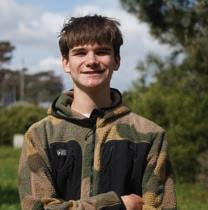
Among the array of book genres — like fiction, or nonfiction, or fantasy — there is also a distinct, unofficial one: the classic literature staples on any high schooler’s reading list.
So prevalent is this genre that practically anyone can hear it mentioned and know the books it includes. There’s Romeo and Juliet; there’s Of Mice and Men; there’s The Great Gatsby. Books such as these have been taught to generations of students — and they are still being taught at schools around the U.S. and at TPHS.
Those titles are embedded into English curricula, but a positive opinion of them is not quite as embedded into the students who read them. Some think that changes need to be made to English classes — more modern, applicable and inclusive novels should be taught. Still others think there are merits to reading the classics. The process of redefining and reshaping the high school literary canon is an arduous one, but one that is worth considering.
At TPHS, English classes from ninth to twelfth grade focus on many of these traditional works. English Department Chair Lisa Callender teaches classics like Mary Shelley’s Frankenstein and Shakespeare’s Hamlet in her AP English Literature and Composition classes.
“I definitely see value in my students reading classic literature, as it challenges students in their reading level and comprehension, as well as teaches universal themes and ideas that humans struggle with,” Calendar said.
I think that a lot of people assume that the really great books were written hundreds of years ago, but authors are still producing incredible works of fiction that could absolutely be studied in a classroom today.”Lucie Babcock SENIOR
Part of that value of classic literature is the fact that even books that seem as removed as Pride and Prejudice by Jane Austen or 1984 by George Orwell can be moving and relatable to high school students, according to Callender.
“It seems crazy that [Hamlet] would have any compatibility or similarities with today’s teenager,” Callender said, but Hamlet, like many modern teens, “struggles with his
existence” and deals with mental health issues.
Not all students, though, see the classics they read in school as particularly relatable or interesting.
Although Kate Johnson (12) relates to a couple of novels she has read in English classes at TPHS, she said some are really “out there.” She has never had to “avenge her father’s murder” like Hamlet did, or “stalk a married woman” like Jay Gatsby.
Lucie Babcock (12) agreed. Reading The Catcher in the Rye as a sophomore, she said she wondered why teachers called the novel a “universal teenage experience.”
“It certainly wasn’t my teenage experience, and it probably wasn’t anyone’s who wasn’t another straight rich white boy like the main character in the novel,” Babcock said.
Beyond feeling disconnected from characters in classic literature, Johnson said having to read Shakespeare is tedious — calling it “criminal.”
“It’s a waste to dedicate so much time to just Shakespeare, especially [an author] who is so dull,” Johnson said.
While personal opinions on the books read in English classes differ from person to person and from novel to novel, there seems to be a degree of dissatisfaction from students with the traditional curriculum.
Given that these books have been taught in classrooms for decades, it is not wholly unsurprising that students can find them tired and irrelevant. The last significant change to the high school canon of books was in the 1960s and 1970s, according to The Conversation — when novels like The Catcher in the Rye and The Lord of the Flies were then new and untraditional.
Over the past decade that Anna Hubbard — an English 12 and AP English Language and Composition teacher — has worked at TPHS, she said she has seen almost no change in the English curriculum.
“We are limited in what we can do. In terms of the novels we have, our curriculum really hasn’t changed all that much … ” Hubbard said. “To be honest, many of the books that we study in high school today are the same books that — back in the Stone Age when I was in high school — we also studied.”
It may be clear that it is time to reexamine the works we teach in English classes and time to introduce fresher works that resonate more with students. What is not so clear is exactly how that change should be enacted.
A significant factor in changing curricula is the finances of the process.
According to Callender, “it’s a huge investment” to buy 500 or so novels so that each English student can have a copy.
“It’s just hard because of the approval process and the amount of time it takes, even though we still like to bring it up at our English department meetings. Unfortunately, it always comes down to money.”
English teachers in SDUHSD are allowed to choose what books to teach in their respective classes, as long
as said books are on the district approved list. To be approved, books have to “be vetted through teachers and parents, as well as district board members,” according to Callender.
This further complicates the process of selecting new novels to teach, as there are many facets to consider in approving them, such as whether certain newer novels will stay relevant and speak to students in a decade from now.
“As a department chair, I’m part of the process that’s looking at how we [can] vet novels in a faster way, as it’s currently very cumbersome,” Callender said.
To be honest, many of the books that we study in high school today are the same books that — back in the Stone Age when I was in high school — we also studied.”Anna Hubbard ENGLISH TEACHER
Though the process is slow and intricate, some change is slowly trickling into the TPHS English literature curriculum.
In Oct. 2021, the California legislature passed Assembly Bill 101, a law requiring students, beginning with the graduating class of 2030, to take a semester of an Ethnic Studies class in high school.
While this requirement can be implemented in a number of ways, SDUHSD plans to incorporate it into the current English curriculum — which will influence what novels are being read in these classes, and curriculum will presumably start to stray, in part, from traditional works.
“As the district moves forward in introducing Ethnic Studies through the English department, we are going to shed ourselves of the old curriculums that we do currently each year,” Callender said. “[It] is pushing us forward to move faster in changing our curriculum.”
A change to highlighting more diverse, modern points of view is welcomed by some students.
“I think that a lot of people assume that the really great books were written hundreds of years ago, but authors are still producing incredible works of fiction that could absolutely be studied in a classroom today,” Babcock said.
by Ari RosenthalA tale as old as time — classic literature taught in high schools is often criticized as outdated and obsolete. The Falconer takes a look at various factors that go into changing English curricula and students’ views on the need for new material.
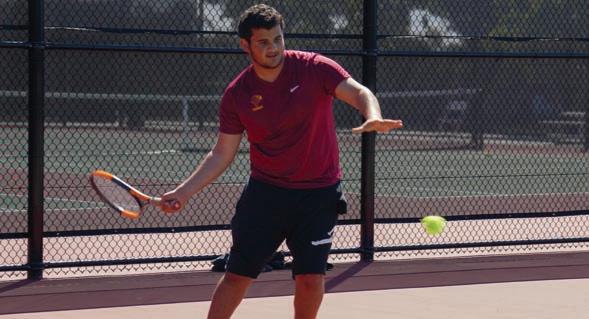
On March 10, Zakariah Kadri (11) began a fast, one that will last until April 9. Two days later, he helped the TPHS JV boys tennis team clinch a 17-1 win against La Costa Canyon High School.
The evening of March 12 marked the beginning of Ramadan, the ninth month in the Islamic calendar. For approximately 30 days, Muslims fast from sunup to sundown and focus on charity and good deeds.
For some Muslim athletes at TPHS, this fast means the absence of food and water during games and practices.
“Fasting while practicing or playing is honestly not as bad as you would think it is,” Kadri, captain of the JV boys tennis team, said. “You may sometimes feel like you’re thirsty throughout the day, but I step onto the court and I don’t feel the need for food or water anymore.”
For Kadri, time spent on the court can actually aid in his fast.
“It’s when I’m not doing anything — on weekends when I have no practice and I’m just sitting at home — that I find myself taking a walk to the fridge,” Kadri said.
TPHS social science teacher and Muslim Student Association adviser John Milner said he has observed an effect similar to the one Kadri described.
“In a lot of ways, sometimes you could go into that flow state, and
I don’t feel any less than another person who has been drinking or eating all day. You are just as powerful and important to the team during Ramadan, no matter what.”
Aryam Manasrah SENIOR
you’re even more focused [during a fast],” Milner said.
While Kadri continues his tennis with relative ease during Ramadan, other athletes see a change in their performance.
“It’s really humbling to play sports during Ramadan,” Aryam Manasrah (12) said. “You do take more breaks and you do have to focus on what your body is saying to feel grounded. That may be tough, but you can overcome it.”
Manasrah played soccer on her former school’s team and now plays for recreation, including during Ramadan.
For Manasrah, waking up for Suhoor, the meal eaten right before sunrise
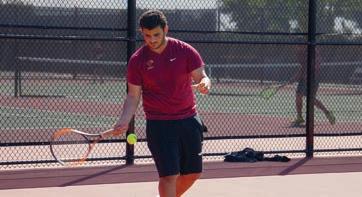
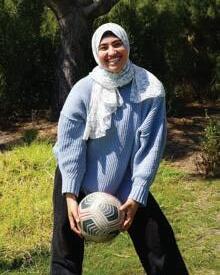
pre-fast, and communicating with her coaches allowed her to maintain energy during practice and remain on her team throughout Ramadan.
“I told my coaches about my fasting and every time I didn’t look okay, I was allowed a five- to 10-minute break to regain energy and fitness to prevent myself from fainting,” Manasrah said.
In fact, for Manasrah, playing a sport during Ramadan makes an athlete stronger.
“Just like anyone, I don’t feel any less than another person who has been drinking or eating all day,” said Manasrah. “You are just as powerful and important to the team during Ramadan, no matter what.”
You may sometimes feel like you’re thirsty throughout the day, but I step onto the court and I don’t feel the need for food or water anymore.”
Zakariah Kadri JUNIOR
Two hundred sixteen career points. 475 passing touchdowns. Four NFL MVP awards. A three-day political career. These are the stats of the disgraced New York Jets quarterback, Aaron Rodgers.
Sports fans will be disappointed: this is less of a Sports Corner and more of a Political Corner.
On March 12, Independent presidential candidate and buffet-style conspiracy theorist Robert Kennedy Jr. confirmed that Rodgers was among his top choices for a presidential running mate.
Three exhilarating days later, a video was posted on X (formerly Twitter) of Kennedy saying he’d chosen his running mate, declaring that “it’s not any of the people they’ve been talking about” –– effectively ending Rodgers’ “political career.”
In many ways, Rodgers’ terrifying yet anticlimactic time as a potential vice presidential candidate mirrored his 2023 football season –– his first with the Jets after 18 seasons with the Green Bay Packers.
Let’s set the scene: Rodgers steps out onto a new field, wearing a new jersey for the first time in his highly successful career. The game begins, with Jets fans on the edges of their seats watching their new quarterback, who was traded for a first-round pick and some change, for the low price of $75 million. Four snaps and 94 seconds into the game Rodgers ruptured his Achilles tendon in a sack by the Buffalo Bills’ Leonard Floyd.
Back to March 12: Kennedy announces Rodgers is on his short list for a running mate. March 13: Rodgers informed a CNN reporter of his belief that the Sandy Hook shooting was a “government inside job.” March 14: Rodgers posted on X, saying “ what happened in Sandy Hook was an absolute tragedy.” March 15: Rodgers was officially out of the running to be the Independent ticket VP.
If we can learn anything from Rodgers’ close call with Capitol Hill, it’s that “too crazy” exists even for even the craziest of people. Who knew that a weekly slot on The Pat McAfee Show, injection with a homeopathic COVID-19 vaccine alternative and a slew of 9/11 “trutherisms” wouldn’t win him widespread public approval?
Rodgers will supposedly return to the NFL to play for a couple more years, likely with the Jets, given his Achilles is reportedly healing well. With that cleared up, on March 26, Kennedy also officially announced that his vice presidential running-mate would be attorney and entrepreneur Nicole Shanahan.
For now, all we can do is hope and pray that Rodgers’ move to the Jets represents his first step into oblivion.
ON THE COURT: Zakariah Kadri (11) warms up for a March 19 match. The JV boys tennis team defeated Westview High School by games after tying 9-9, a game Kadri played while fasting. POWERFUL PLAYER: Aryam Manasrah (12) is all smiles for soccer. A former player, she continued her season during Ramadan. PHOTO BY ANNA OPALSKY/FALCONER PHOTO BY ANNA OPALSKY/FALCONER PHOTO BY HOPE DENNIS/FALCONER Nadia Fadlu-Dean STAFF WRITER

The TPHS varsity boys golf team is off to a strong start this season, with a talented roster ready to maintain their first place state ranking.
Jay Leng Jr. (12), a Stanford University golf commit, has been a part of the team since his freshman year and has played golf since he was five years old.
“I am excited to be surrounded by people with the same goals as me, where we will be able to push ourselves to the next level [at Stanford],” Leng said.
Leng participated in his first tournament when he was six years old and since then he has traveled worldwide to compete in notable tournaments, namely the European Championships in Scotland. Leng also had the opportunity to represent the U.S. in September 2023 in Rome while competing in the Junior Ryder Cup.
“My dad introduced me to golf, and I have loved it ever since,” Leng said. “My favorite part about golf is the creativity behind it. You are not confined to one specific strategy or shot. Every golfer is unique and every swing is different.”
Leng is hopeful for the team’s success this season, along with his teammate Ethan Elleraas (11).
“This season, the team hopes to win CIFs and make it to state and give it another run this year,” Elleraas said.
Elleraas has played golf for most of his life and has competed in the International Management Group Academy Junior Worlds, where he placed 15th out of 203 other players in California.

Continuing off of the team’s momentous history — eight consecutive CIF titles — the boys golf team is currently ranked fifth in the nation and first in the state, according to the PGA National High School Golf Association.
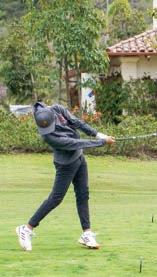
Although the team lost seven of their senior players following last season, they are still on track for yet another successful playoff run this year.
“We are rounding into form at the right time of the season and coming together as a team,” assistant coach Joe Rokoszewski said.
Recently, the team went to a tournament in Northern California where it competed against some of the top high school teams from various states, according to Leng. The boys placed sixth overall and Leng took home the individual first place title.
According to Rokoszewski, the team’s biggest competition this season has been long-time rivals Carlsbad High School, La Costa Canyon High School and Cathedral Catholic High School. However, the team hopes to beat all three schools, Elleraas said. In preparation for tournaments and league play, most members of the team practice on their own time individually, but play together about three times a week while competing in matches. Players for CIF post-season play are selected based on their scores over the season and their improvement throughout the season, according to Elleraas.
“I think that whoever is selected for the CIFs will practice hard on their own and work hard before competition,” Elleraas said.
“We prepare every day with one shot at a time and the ultimate commitment of trust in ourselves along with our teammates,” Rokoszewski said.
A look at a top-ranked team, 5th in the nation and 1st in California.

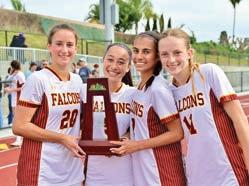
hen you think of Laurel Gonzalez (12) – known as “LoGo” to her friends – the first thing that comes to mind might be the three varsity sports she plays: girls lacrosse, soccer and flag football. Or maybe it is her collection of athletic awards: All CIF San Diego Player of the Year in girls soccer, lacrosse and flag football. But for her teammates, Gonzalez’s defining characteristic is her inner cat.
“Sometimes I think she is a cat,” Abigail Lea (12), one of Gonzalez’s soccer co-captains, said. “You know how cats can jump off of anything and still be okay? I feel like she does that.”
Gonzalez is not just “okay” as she jumps from sport to sport each athletic season — she is triumphant. Gonzalez won the CIF Open Championship for lacrosse in 2023, helped lead the girls flag football team to the CIF San Diego Section Flag Football Championship and scored a goal in the Open CIF Soccer Championship game against Eastlake this winter season. Her ability to coordinate plays on the lacrosse field, score hat tricks on the soccer pitch and throw game-winning passes in football truly demonstrates her cat-like qualities.
“It’s the cat agility and reflexes [that help her excel],” varsity lacrosse and flag football player Camille Samarasinghe (12) said. “It’s got to be the cat inside her.”
According to Gonzalez, her penchant for athletics started young
“Playing sports, throwing, catching a ball and running around were my favorite things to do,” Gonzalez, who will play Division 1 women’s lacrosse at Johns Hopkins University next fall, said. “I just felt more at home [on the field] than anywhere.”
At TPHS and on her club lacrosse team, Mad Dog West Elite, Gonzalez is known by her coaches and teammates as a standout athlete.
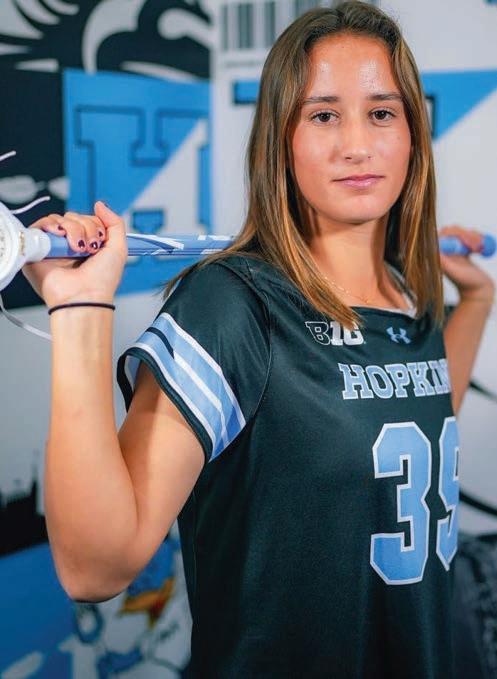
“In my 30 years of coaching, I can honestly say she is hands down the best all-around athlete I have ever coached,” Pam Kalinoski, girls varsity soccer assistant coach, said. “Her gifts are endless in every sport she participates in. She has a silent confidence about her that is fueled with humility.”
Part of Gonzalez’s gifts in sports is her natural athleticism, according to Lea.
“You can put her in any environment, sports-wise, and she’ll still succeed. It doesn’t really matter what she’s doing, she’s up for the challenge,” Lea said. Paired with this talent, Gonzalez’s decision-making skills on the field are what give her an extra edge, according to Alina Hsu (12) who plays lacrosse and played flag football with Gonzalez.
“She has crazy game IQ, which is hard to come by these days, especially in lacrosse because it’s a very intricate game,” Hsu said. “Playing with her is honestly spectacular because you can just see how she works things out in her head.”
Gonzalez also excels in leadership on the pitch. Gonzalez was a captain on each of her three TPHS teams, and she leads her teammates with a “relentless work-rate, unselfish decision-making, a ‘team first’ mindset and a competitive heart,” according to Kalinoski.
To Talia Bertino (12), another co-captain on girls soccer, Gonzalez’s lead-by-example style is paired with an innate friendliness.
“She’s always having a good time with whoever she’s with, it doesn’t matter who,” Bertino said.
Samarasinghe agreed.
“When you get to know her as a person is when you actually get to differentiate between her athletic abilities and awards, and you realize that she’s a really cool person too,” Samarasinghe said. “She’s someone that everyone wants to be friends with because of her fun personality, and not just because she’s a stellar athlete. It’s because of who she is.”
For Gonzalez, playing on three teams allows her to foster such friendships.
“Playing with people on the field and being friends with them off the field, it adds to the family culture,” Gonzalez said.
Who Gonzalez is, through the words of her coaches and teammates, is clear: a talented athlete with cat-like reflexes and mental toughness, a dedicated leader and a good friend. But most importantly, as her teammates jokingly asserted, she smells good.
“She smells like peaches and pears, so that’s brought good energy to the team – it really brightens everyone’s day,” Bertino said by Kathryn Reese
With the majority of our returning athletes training year round, this squad feels like family at this point. I think the team being so close is crucial.”
Kyle Brown VARSITY POLE VAULT COACH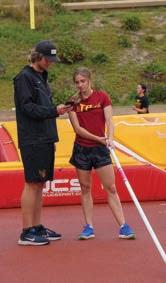
Pole vault competitions usually occur one to two times a week, with occasional invitationals on the weekends.
For Alisa Galkin (10), meets are for both competition and socializing.
“For me, competitions are always exciting and a new opportunity to improve,” Galkin said. “While conditions are unpredictable and the pressure is on, I enjoy the thrill and [I] love reconnecting with friends from other schools.”
While competing is exciting, the pressure stays on.
“Competing can be very fun, but also stressful at these meets,” Weisman said. “There’s a lot ... of overthinking when it comes to what pole to use, what step to go from, what bar to start on and how to beat others through strategy.”


After only one year of pole vaulting, varsity athlete Brandon Moore (12) has not only reached a personal record of 14 ft. 1 in., but has also become an internet phenomenon, posting clips of his pole vaulting journey on Instagram.
“I decided to start posting on social media for fun because I thought, ‘Why not, it doesn’t hurt to post,’” Moore said. “And the longer I vaulted, the more content I had, and I decided to just keep posting and see where it led.”
Garnering millions of views on multiple posts, with one surpassing six million views, Moore now has more than 6,000 followers on Instagram.
“I am getting partnership offers from athletic companies and various athletes, who give me tips on how to improve myself,” Moore said. “I have had many people [direct message] me on Instagram asking about my vaulting and if I could help them and coach them too. I try to respond to all of them, but I can’t get to them all.”
Posting both successes and slip-ups, Moore’s content has earned him more than just viral online attention.
“People recognize me at school, pole vault meets and sometimes when I am just walking around,” Moore said. “[It makes] me smile and makes my day better.”
Pole vault team captain Joey Weisman (12) began his career on the TPHS track and field team as a freshman. Toward the end of his freshman year, his coach encouraged him to try the pole vault. Now, he’s reached a personal record of 16 ft. 1 in. (3 in. short of the school record) and is headed to the University of California Santa Barbara to compete at the Division 1 level in pole vault.
“I’m very excited to go [to UCSB] as an athlete, but also a student because the school is such a perfect fit for me,” Weisman said. “They have a great track and field program, and I’m happy to be vaulting on the beach at a wonderful school.”
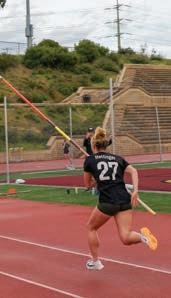
Practicing for multiple hours every day after school, the pole vault team is a tight community.
“I would say I am very close to my teammates. I love to help coach them and train them,” Weisman said. “And then outside of Torrey, I am very close to a lot of people in the vault community, on a state and even national scale.”
Galkin, the girls’ record holder in pole vault at TPHS and topranked sophomore pole vaulter in California, echoed this.
“I love spending time with people who are just as passionate about the sport as I am,” Galkin said.
Varsity head pole vault coach Kyle Brown is confident heading toward CIFs in the coming weeks. With invitationals approaching first, the team is healthy and “hungry for more.”
What are TPHS students up to, Before the Bell? The Falconer takes a look at life before 8:30 a.m.
“I don’t like waking up early, but the benefit of it is that I get it out of the way for the rest of the day so I don;t have to practice my piano later on. I can do whatever I want in the afternoons.”
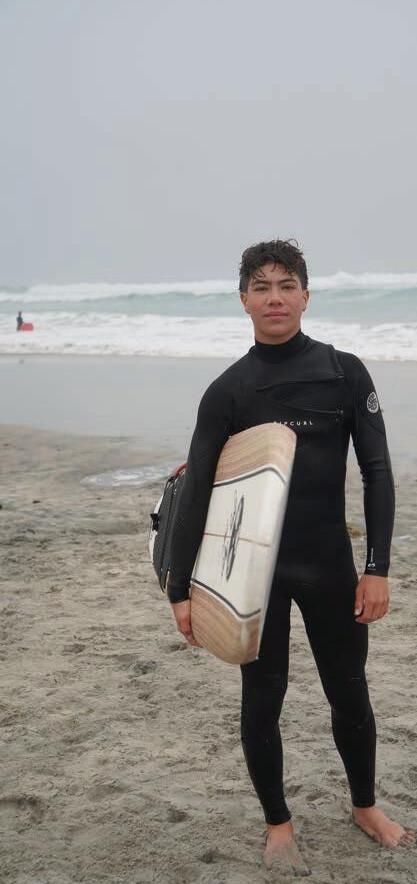
“Something that’s pretty cool about [surfing in the morning] is the sunrises. I’d never woken up that early to see a sunrise at the beach [before], and there have been some pretty cool sunrises. It’s very peaceful. It’s a good way to start my day.”

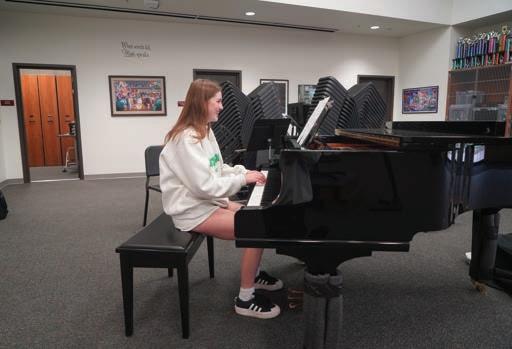
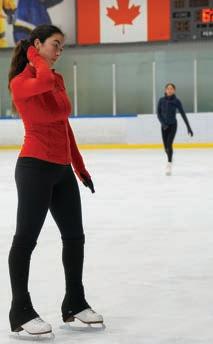
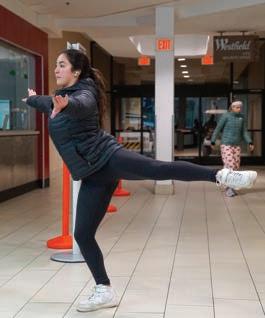
“Having skating in the morning wakes me up and it also distracts me from everything. You wake up and all you think about is going to the rink ... I don’t have to wake up in the morning and think about whatever test or college thing I have to do that day. I only think about skating.”
@
“When I just go to school, I feel less productive. If I wake up earlier and I do something, then I feel like I’ve had a full day by the time school has ended” (Conover).
